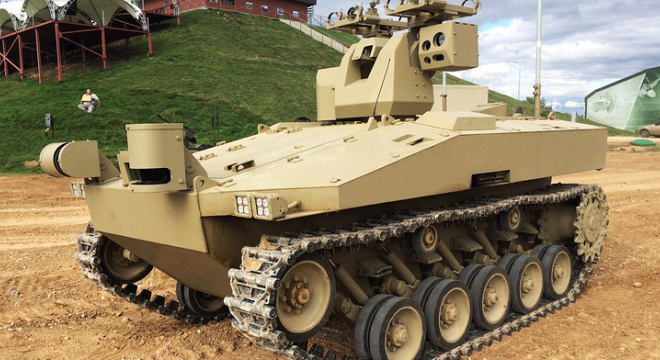
The plan for the unmanned combat ground vehicle, or UCGV, is to carry machine guns and anti-tank missiles, and weigh in at 20 tons. The Russian company is no stranger to UCGVs — indeed, just last year, the company debuted its 7-ton BAS-01G Soratnik (Comrade-in-arms) unmanned vehicle and then in December, showed off its impressive capabilities to the Russian Ministry of Defense, outfitted with four anti-tank rockets and a machine gun.
But the new UCGV would make this look like child’s play. At three times the size of Soratnik, this new vehicle is slated to be about the same size as a U.S. Army M1126 Stryker ICV. And doubtless, it’ll just build upon the autonomous abilities of its younger sibling. The Soratnik, for what it’s worth, can operate autonomously for up to 10 days in standby mode, waiting to engage in action. It can also be modified to carry up to a 30mm gun or eight Kornet-EM laser-guided anti-tank missiles, Guns.com reports.
It’s unclear how the new 20-ton monstrosity will perform when it comes to speed. The Soratnik tops out at 25 miles per hour and has a range of up to six miles. But we’ll just have to see what Kalashnikov has in store for us when it unveils its newest headline-maker.
In the meantime, you can check out footage of the Soratnik here.


